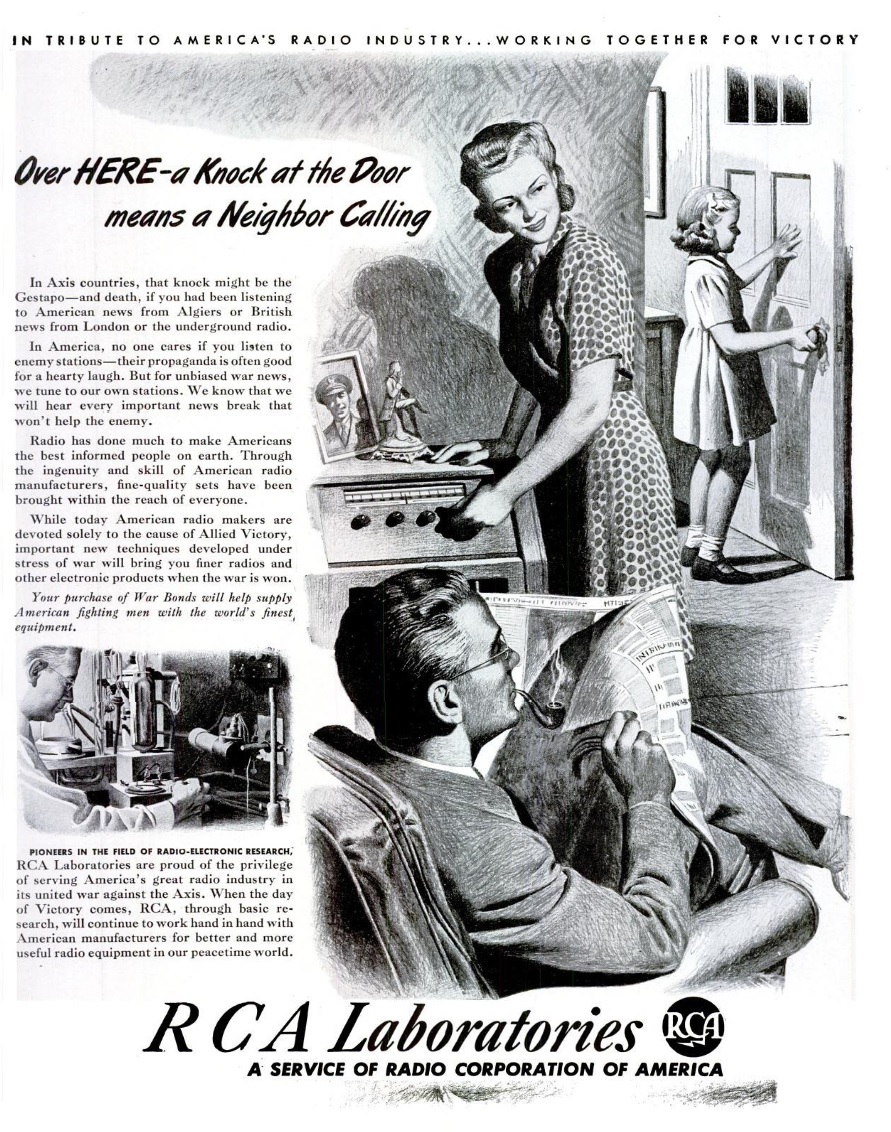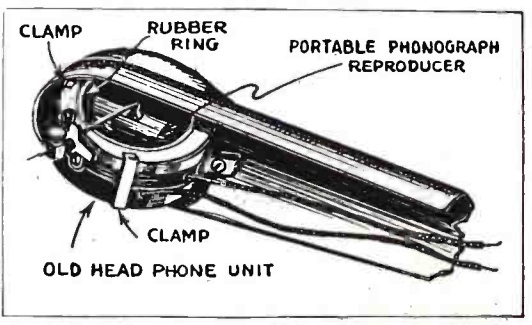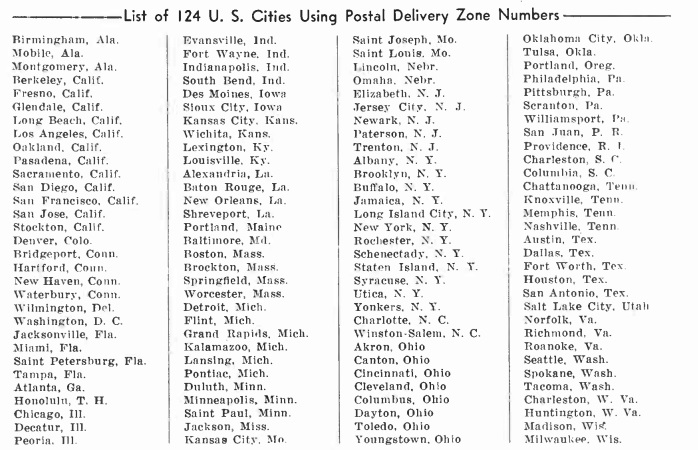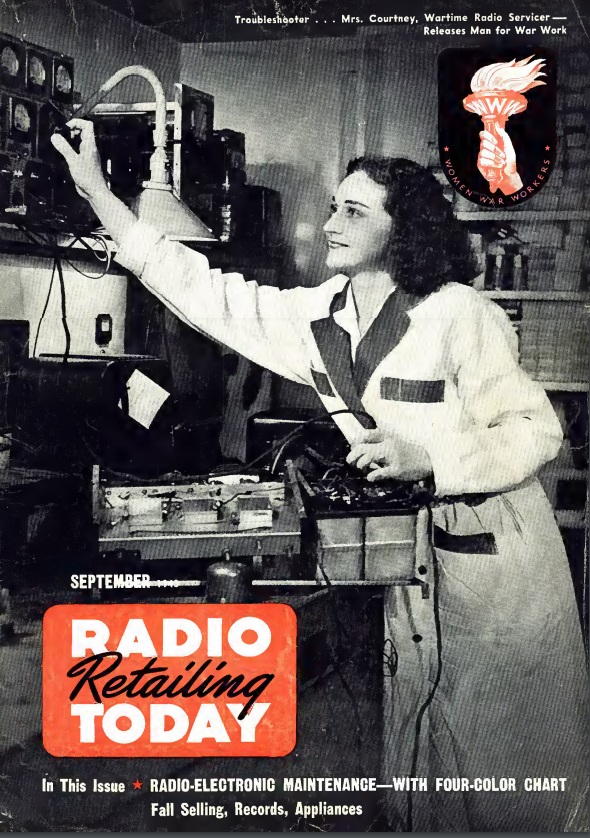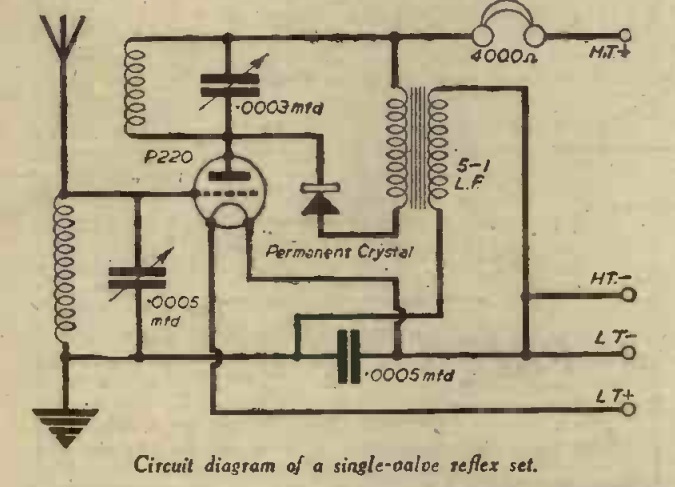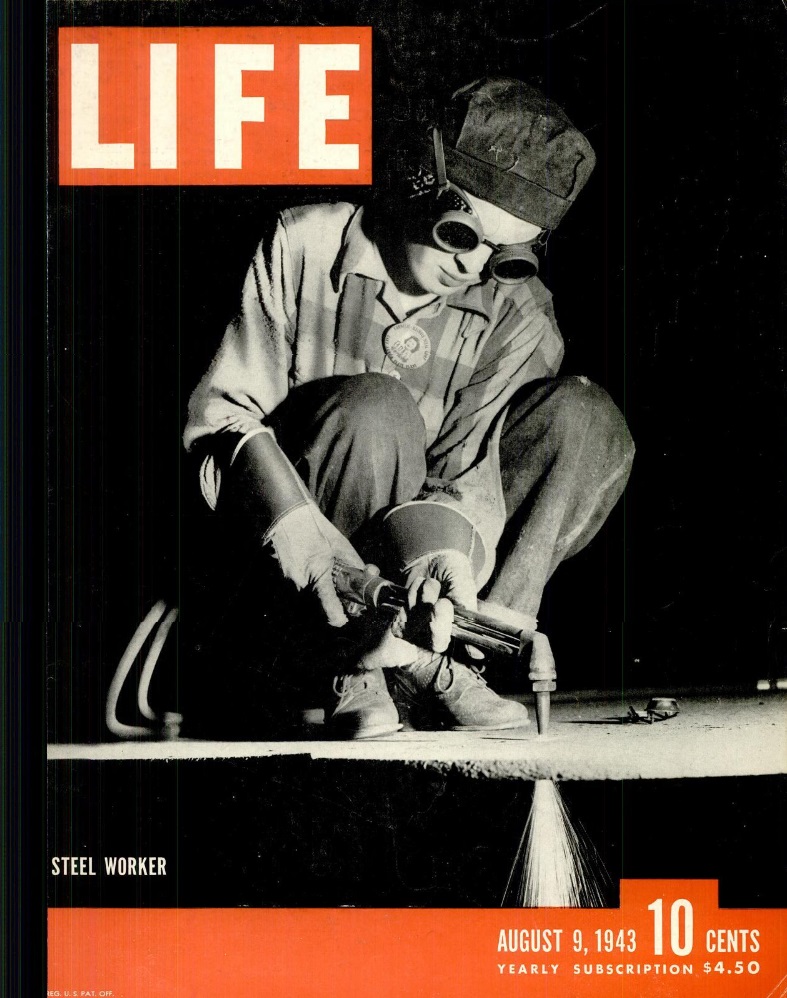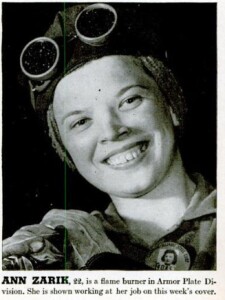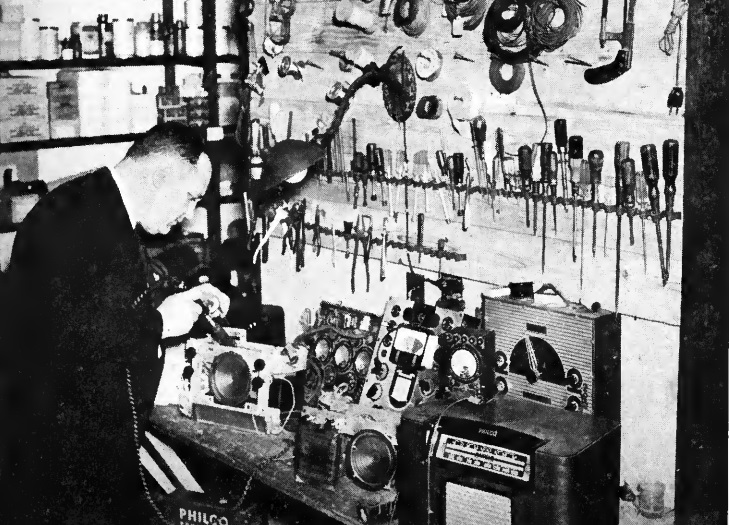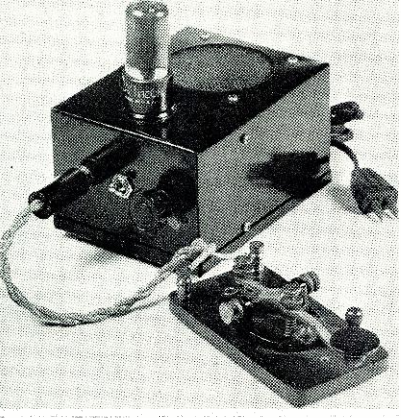 The December 1943 issue of Radio News carried the plans for this simple one-tube code oscillator. The 117N7 with a built-in rectifier meant that it could be done with a single tube.
The December 1943 issue of Radio News carried the plans for this simple one-tube code oscillator. The 117N7 with a built-in rectifier meant that it could be done with a single tube.
The author of the article is one R.C. Zaun, an engineer with the Thorardson Electric Manufacturing Company. Not surprisingly, the most expensive part shown in the schematic is probably the audio output transformer, which just happens to have a Thorardson part number.
As shown here, the oscillator had a pitch of about 1600 Hz. This could be varied in one of two ways. First, R1 could be replaced with a variable resistor, although the article noted that this would also affect the volume. Another method would be to change the value of C4, switching in capacitors of different values to vary the pitch.
If wartime parts shortages meant that the 117N7 wasn’t available, it could be substituted with other versions of a different filament voltage. Of course, an appropriate dropping resistor would need to be used.

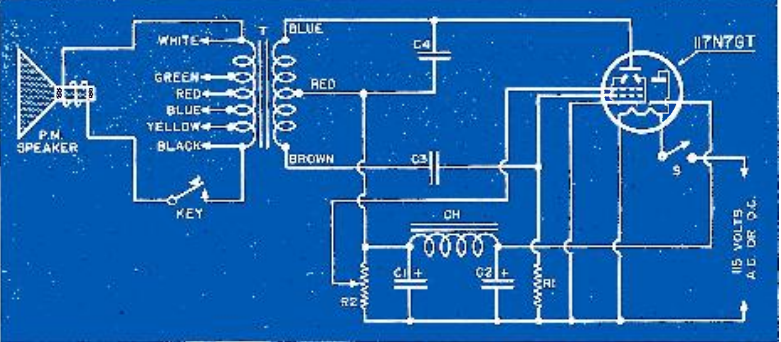
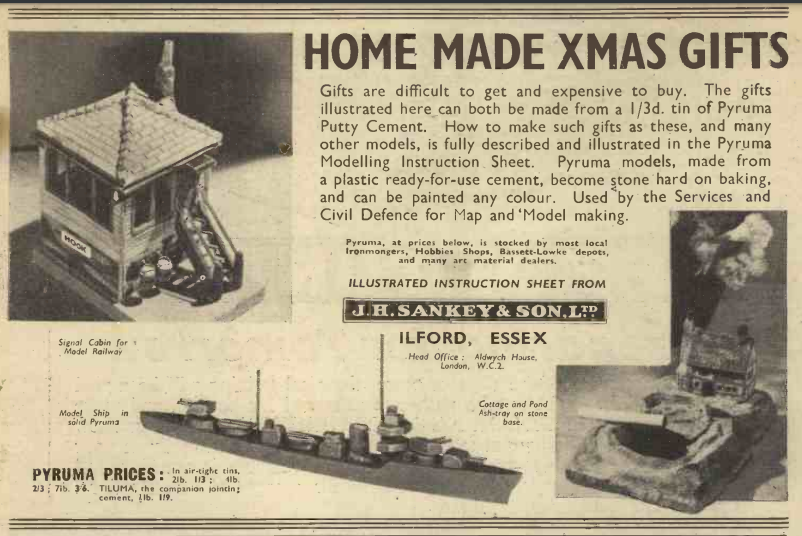
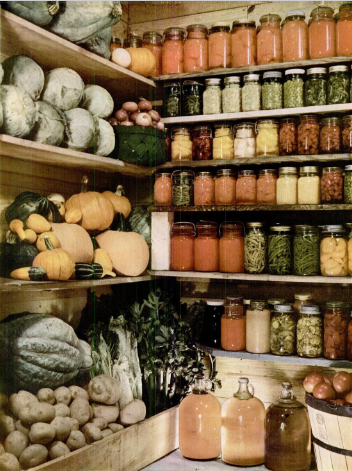
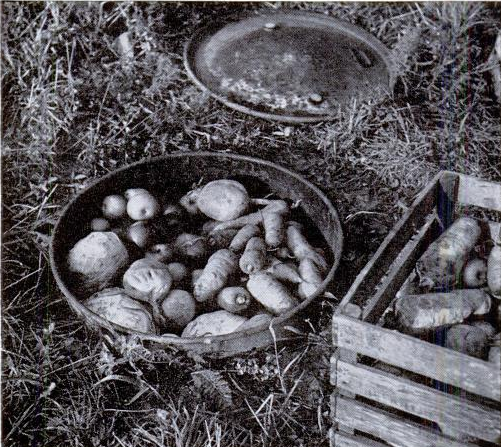 Eighty years ago, many Americans were enjoying plentiful meals without worrying about rationing points, thanks to their victory gardens. And the December 6, 1943, issue of
Eighty years ago, many Americans were enjoying plentiful meals without worrying about rationing points, thanks to their victory gardens. And the December 6, 1943, issue of 